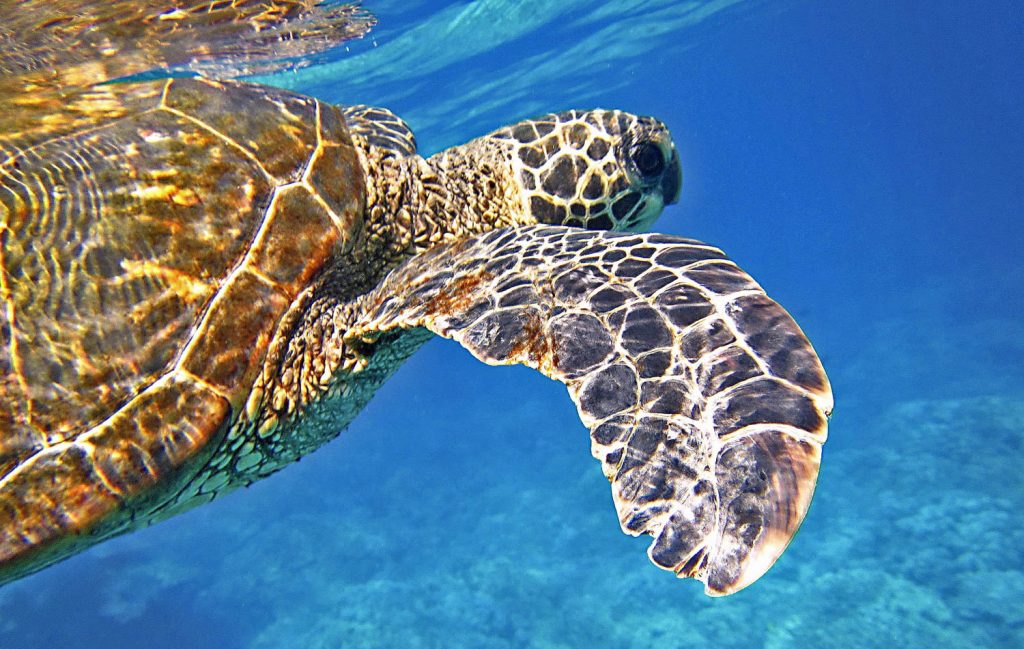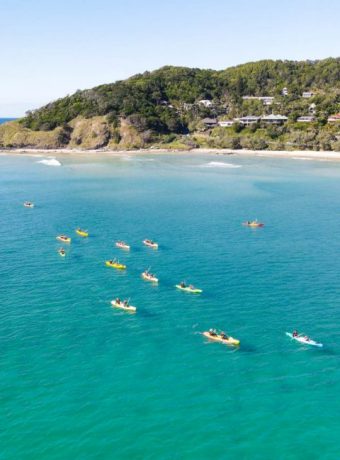The Complete Guide to Snorkeling Byron Bay
The ocean around Byron Bay is part of Cape Byron Marine Park – a protected aquatic reserve – which means it’s jam-packed with diverse marine life. And you don’t need to be a diver to enjoy it.
Snorkeling Byron Bay gives you a chance to get up close and personal with wobbegong sharks, turtles, rays, and an insane variety of fish. If you head out to Julian Rocks, depending on the time of year, you could also see grey nurse sharks, leopard sharks, and manta rays.
For the best chance of seeing some amazing marine wildlife, a guided snorkel tour is the way to go. But there are also plenty of spots where you can easily go it alone. If you don’t have snorkel equipment, you can buy it from Byron Bay Dive Centre or Sundive.
Then all you need to know is where to go. So let’s find out.
Byron Bay snorkeling spots
Julian Rocks
If you book a guided snorkel tour, you’ll most likely head to Julian Rocks. And with good reason. A five-minute boat ride from Byron, Julian Rocks is one of the best places to snorkel in Australia. All year round, you’ll find turtles, rays, wobbegong sharks, and over 400 species of fish here.
Also, from November to May, the area is home to Leopard Sharks and Manta Rays, and from May to November, you can see Grey Nurse Sharks. If you’re lucky, you might even see humpback whales or dolphins from the boat on your way out or back.
Julian Rocks is also an incredibly popular spot for scuba diving in Byron Bay.
But never try to touch marine wildlife. *facepalm
The Wreck
Just north of Main Beach car park, around 30 metres offshore, you’ll find the shipwreck of the SS Wollongbar, which got blown aground during a gale in 1921. Known locally as the Wreck, the abandoned ship’s hull, boilers, rudder bar, and tiller attract wobbegong sharks, turtles, stingrays, and various fish. The Wreck is easy to find as you can always see parts of it sticking out of the water.
Tassie III
Another shipwreck, the Tassie III sank in 1945 and now sits almost 100 metres from the shore in line with Fishheads restaurant at Main Beach car park. This wreck is about 5-7 meters deep and is often surrounded by huge schools of fish, plus you could see turtles, rays, eels, crayfish, octopus, and nudibranchs. You might find this one a little harder to locate as it’s completely submerged, but it is accessible from the shore.
Clarkes Beach
This spot can vary a lot based on how the sand shifts around. When it’s uncovered, there is a large exposed section of rocky reef in front of the Reflections campsite between Clarkes beach car park and Captain Cook car park. If swimming with turtles is on your bucket list, this is a great area to try your luck as they’re regularly spotted here. You might also see rays and octopus, and you’ll most likely see an assortment of fish.
Unless the ocean is flat calm, Clarkes is best snorkeled between mid and high tide as it gets pretty shallow at low tide.
Planning your Byron Bay snorkeling adventure
When is the best time to go?
Snorkeling is one of the top things to do in Byron Bay at any time of year. The average water temperature in summer is around 26°C and autumn is similar at 25°C. It drops to 21°C in winter and is 22°C in spring when you might want a spring suit or wetsuit. If you’re snorkeling out at Julian Rocks, your tour company will provide a wetsuit for extra buoyancy and warmth.
Ideally, you want to go when there’s little swell in the bay and the wind is light – water constantly rushing down your snorkel is no fun! Visibility is often poor after bad weather and big swells, so try to avoid these periods if you can. You should be able to judge the water clarity from the shore. If it looks clear and you can easily see sand and rocks through the water, it’s a good time to go.

Are there any dangers?
Snorkeling in Byron Bay is relatively safe if you follow the usual safety precautions. But there are a few hazards to be aware of:
Stingers. Thankfully, Byron is too far south for deadly box jellyfish, but we do get bluebottles (Portuguese man o’ war), which will give you a painful sting. If the wind blows northeasterly for a prolonged period, you’ll start to see them washing up along the shoreline. A rash guard or wetsuit will protect you, but you could still get stung on any uncovered parts.

Currents. Byron occasionally suffers from strong currents and cross-shore rips, and you can easily get caught out when you’re focused on what’s under the water. Pick a marker on the shore and keep an eye on how much you’re moving relative to it.
The sun. Make sure you protect your skin against the sun, even in winter. Cover up as much as possible and use a high-factor, reef-safe, waterproof sunscreen or zinc on any exposed areas.
You can also double-check for potential hazards with the lifeguards on the beach.
Share the love on snorkeling Byron Bay
So there you have it – that’s everything you need to know to have an epic time snorkeling Byron Bay! If you liked this post or think it would be helpful to someone else, we’d love it if you shared it – feel free to use the social buttons at the top.
We hope you find our guide to snorkeling Byron Bay useful. Just so you know, if you book a trip using the links on this page, we may receive a small commission at no additional cost to you. You can view our full disclosure and affiliate policy here.




